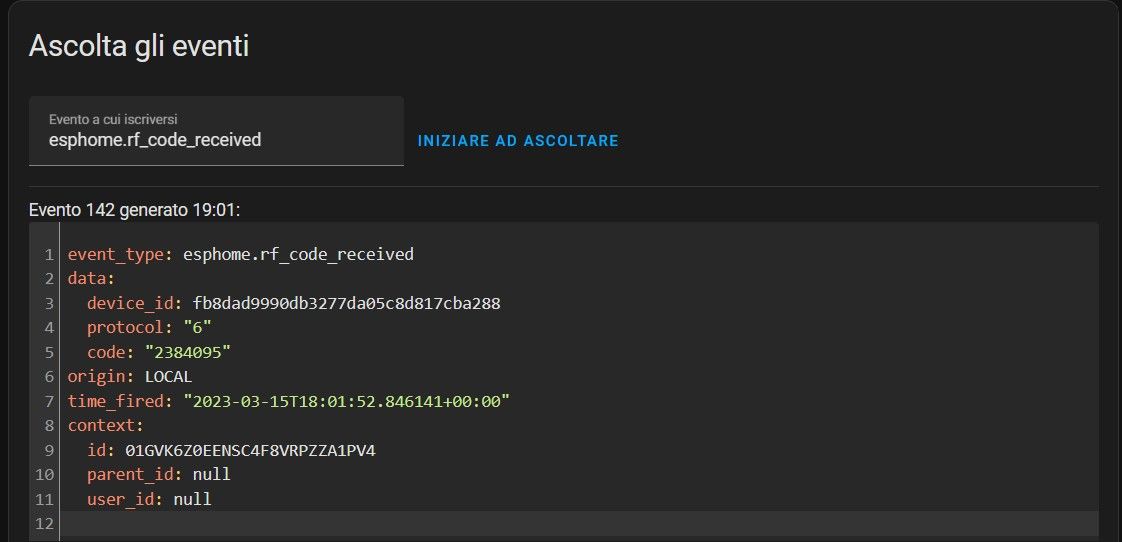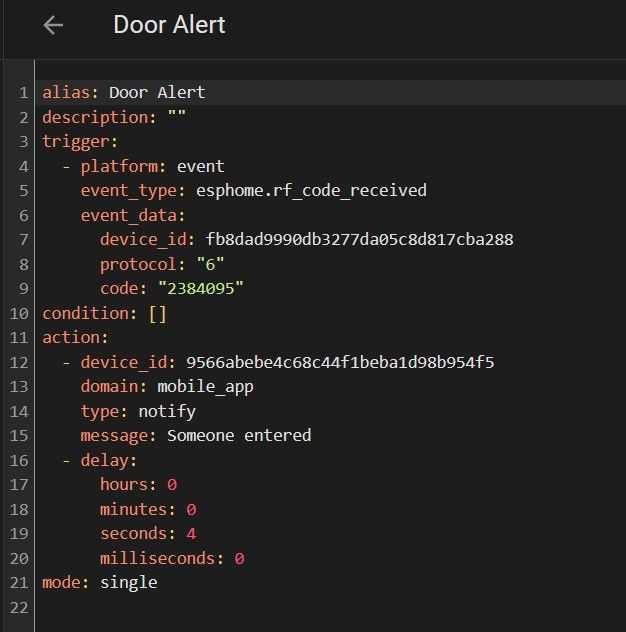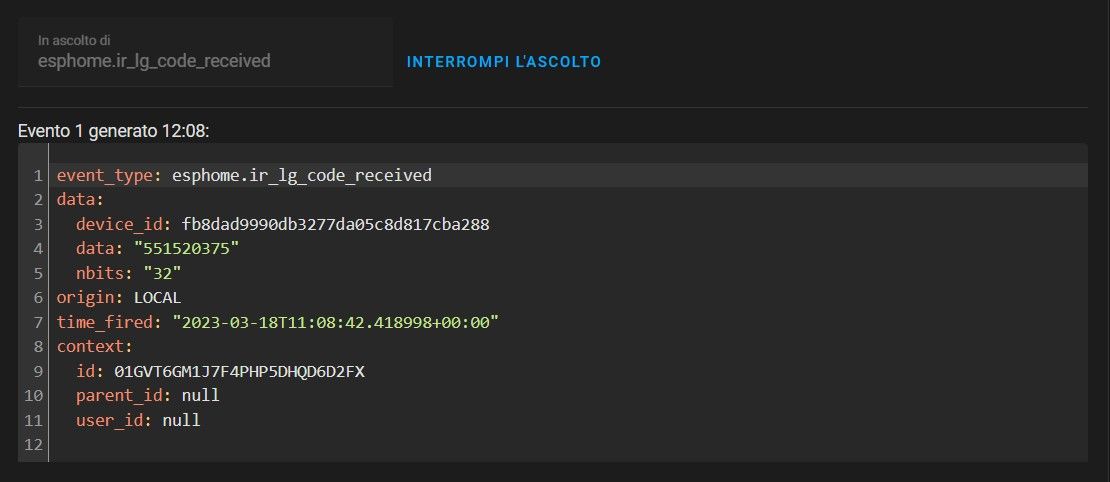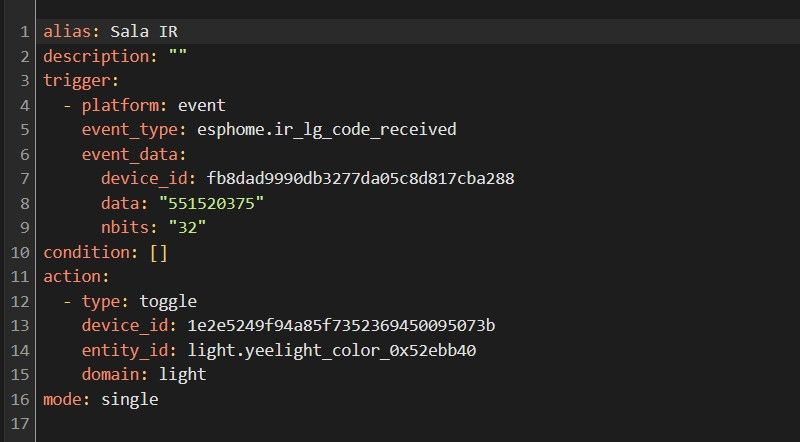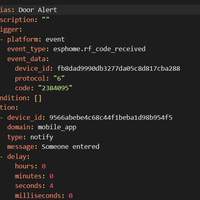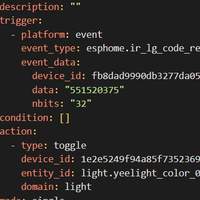Project update 3 of 12
A Deep Dive Into Automation
by Alessandro AHi everyone!
This has been a great week! A review of the ESP 360 Remote has been published on this beautiful Italian blog called inDomus: Recensione: ESP 360 Remote, il tele-radiocomando multisensore basato su ESP32 - inDomus.it. You can easily translate it to your preferred language to read. I wanted to publicly thank them for the professionalism and fairness they showed during the review, without any bias or favor. The material that will be used for the next update has also arrived, and of course, many more supporters have joined the ESP 360 Remote campaign. Thank you so much!
Today I wanted to dedicate some space, in particular, to showcase one of the multiple strengths of the ESP 360 Remote that really set it apart from most devices on the market. This was mentioned in the review, but I would like to delve into it because, in my opinion, it really deserves a lot of attention.
Although devices like RM4 Pro can control IR and RF devices, they can only receive signals when in learning mode. They are therefore not always listening, and it is not possible to use them as repeaters or to trigger subsequent actions. For example, Sonoff RF Bridge can do this (it was designed for this purpose and only on 433MHz) and can only store a certain number of devices/buttons. The ESP 360 Remote, on the other hand, is always listening and always ready to trigger events on Home Assistant as soon as it receives a signal. It does not need to be set in a particular mode, and moreover, it does not have a maximum number of devices. Automations are based on a "real-time" evaluation of the received message, without having to store any data in memory. And the cool thing is that, in addition to RF signals, it can also do this for IR signals, which is very unique.
Want to watch a movie? You can create an automation that, if the ESP 360 Remote reads the ON command from the TV remote control, immediately turns on the stereo system, closes the shutters, and turns off the lights. The limit is only your imagination! You don’t even need to have the ESP 360 Remote near the TV; generally, it is enough to be in the same room. Based on my experience, the signal is received even if it is not in the line of sight of the remote.
Another use could be to be able to infer the state of a device even if it is turned on with the original remote control. In fact, if we turn on the TV with an infrared signal from Home Assistant and turn it off with the original remote control, the state on Home Assistant will no longer be updated. With the ESP 360 Remote, the solution is here because it is always listening to the messages from the various remote controls and can override the state of a home appliance.
For example, I turn on the air conditioner with an infrared signal from Home Assistant. Then I turn it off with the original remote control, but that IR message also reaches the ESP360 remote (even if I’m not pointing the remote directly at it), which will therefore know that someone has pressed the OFF command on the air conditioner remote control. So, on Home Assistant, it can update the state to "off". With ESPHome, this integration is facilitated for IR Climate components adding the receiver_id as variable, but of course, you can do it on any device. In this way, you will always have the updated state on Home Assistant, leaving the freedom to manage home appliances both digitally and manually with original remote controls.
Here’s a demo of an automation in which the ESP 360 remote receives a signal from a super cheap 433MHz door opening sensor and sends a notification to the phone, warning that someone has entered the room. To know which message to listen for, simply subscribe to the event esphome.rf_code_received and simulate the door opening.
Then it is enough to create an automation that is triggered by the event esphome.f_code_received only if that contains the data found in the previous step. The automation is presented as follows:
Usually, RF devices repeat messages several times, so to avoid receiving multiple notifications in a row, just add a delay of a few seconds. Here’s a demo video of how the automation works:
As mentioned earlier, you can do the same thing with infrared signals. Here’s an example using my LG TV. I added the esphome.ir_lg_code_received event triggered by the on_lg automation in the configuration. So, by pressing a button on the remote, and listening for the event, I get this.
The important parts are the data and nbits values. Now I want to create an automation that toggles the state of the living room lamp every time I press that button.
Here’s the video of the operation:
With this video, I also tried to show how the signal is received even if the remote control is not pointed directly at it. It works well, as I said before, even from several meters away and pointing in the opposite direction.
Of course, these are just examples that I brought to demonstrate the potential of the ESP 360 Remote, which distinguishes it, practically, from all its potential rivals. No one else offers this flexibility, both for IR and RF (433 or 315 MHz), making it complete at 360 degrees both in transmission and reception. I’m sure you can find lots of things to do with the ESP 360 Remote and I can’t wait to hear about it! If you haven’t already, I recommend pre-ordering your ESP 360 Remote now to receive it among the first supporters, and remember that the 2-pack is only available during the campaign period! I hope you enjoyed this update, and if you have any questions, don’t hesitate to contact me.
See you next time!




